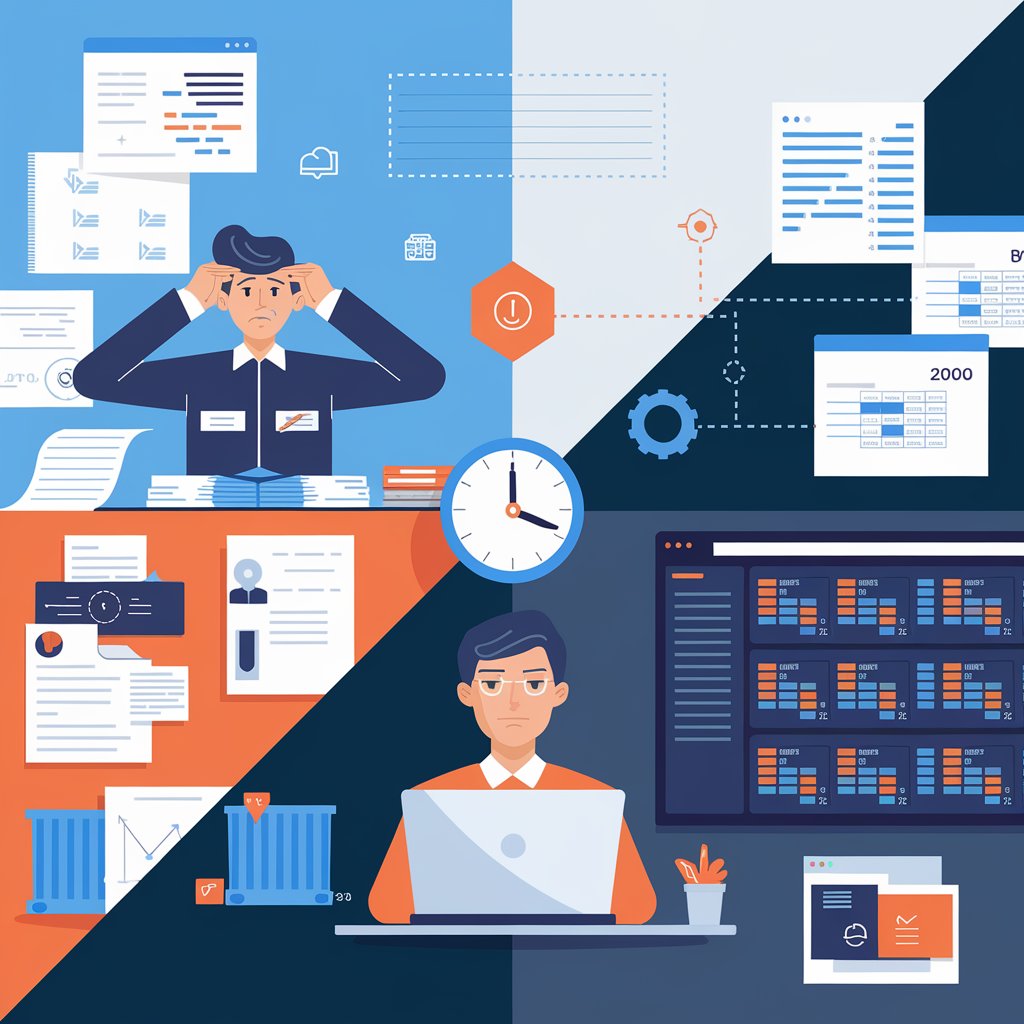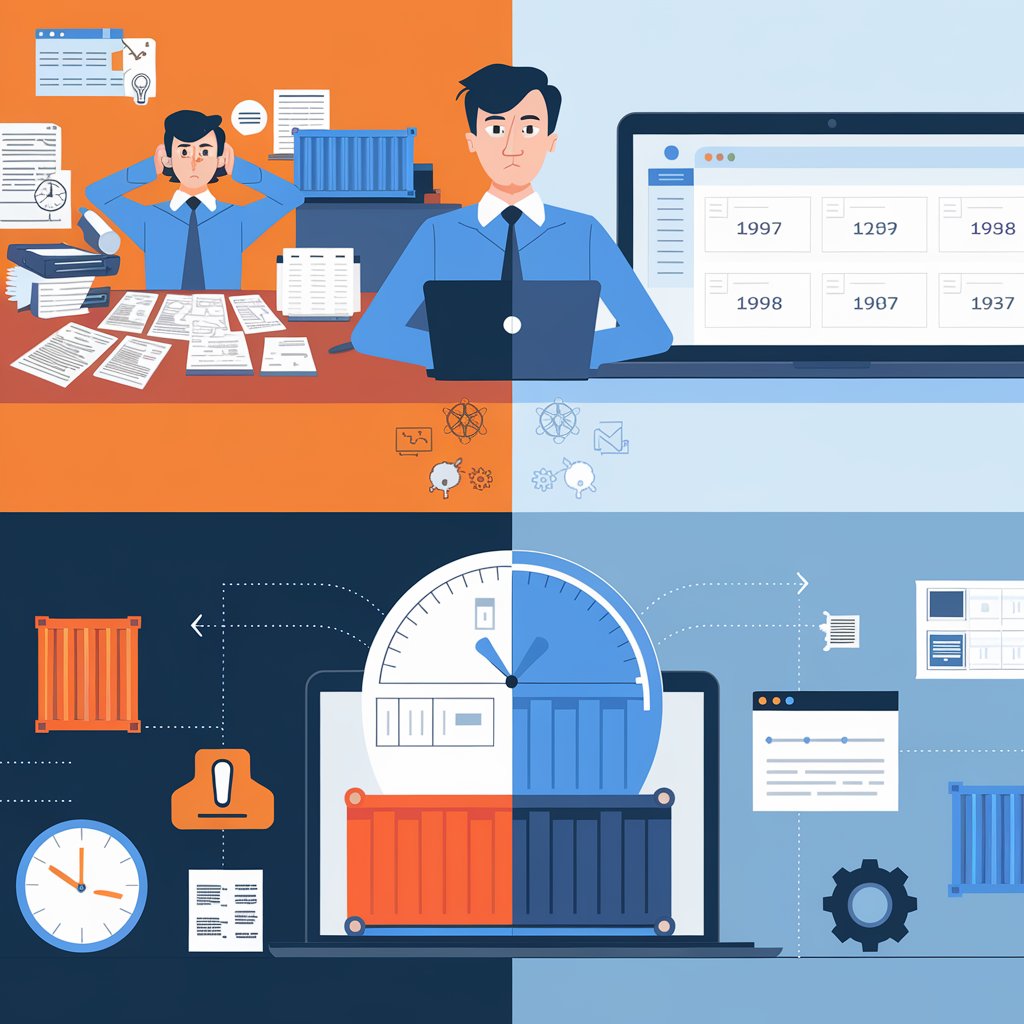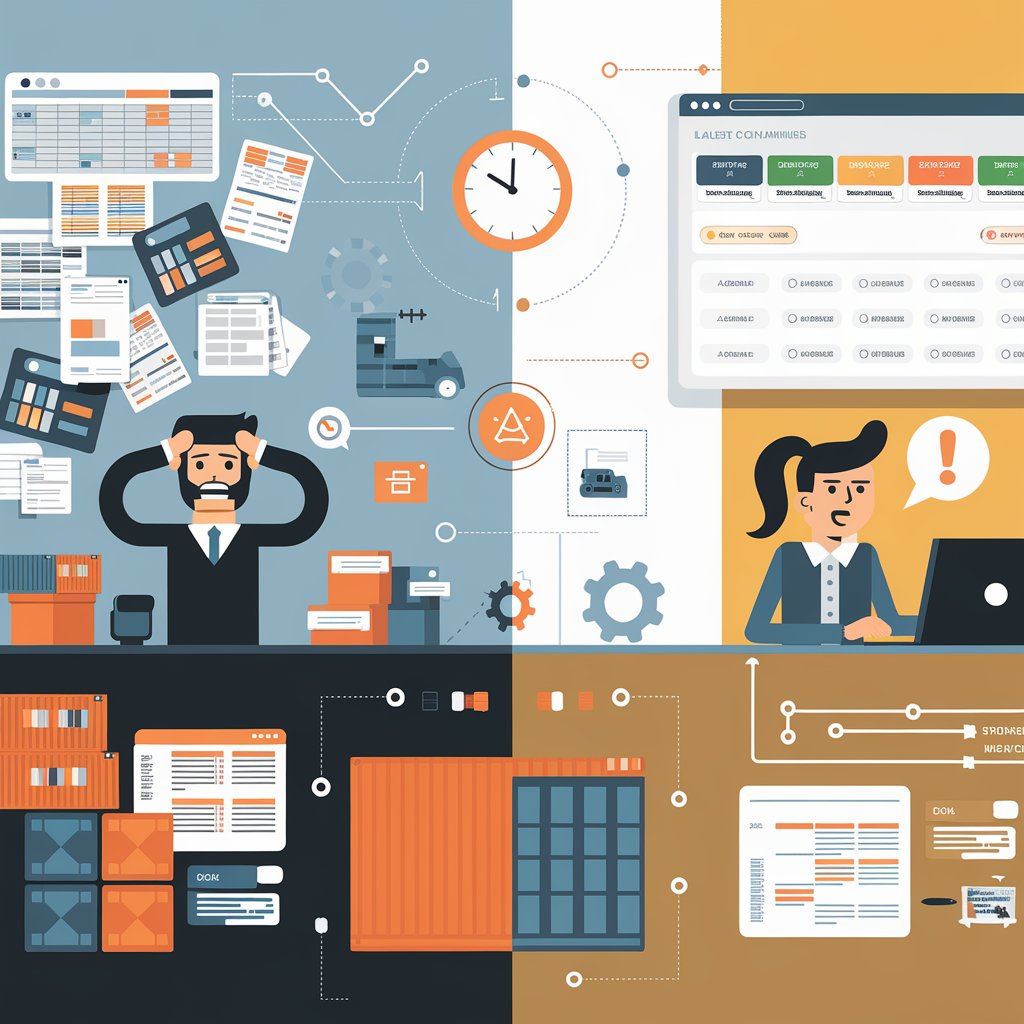Container Tracking Software vs. Manual Tracking: A Cost-Benefit Analysis
Many logistics teams still rely on spreadsheets, email threads, and manual data entry to track containers. While it may seem cost-effective upfront, manual tracking introduces hidden risks: delays, errors, wasted hours, and unhappy customers.

📝 What Does Manual Container Tracking Look Like?
Manual tracking often involves:
- Manually logging container numbers in Excel
- Checking carrier websites individually for updates
- Sending update emails to clients manually
- Calling ports or shipping lines for ETAs
- Cross-referencing documents by hand
This process is time-consuming, error-prone, and inefficient—especially when managing dozens or hundreds of shipments.
💻 What Is Container Tracking Software?
Tracking software centralizes data from carriers, ports, and sensors into one platform. It automates:
- Real-time location updates
- Notifications for key milestones or delays
- Data logging and document syncing
- Shipment status sharing with customers
- Historical analytics and KPIs
➡️ Platforms like Linbis offer these features in a single, cloud-based interface built for freight forwarders, 3PLs, and shippers.

📊 Cost-Benefit Comparison Table
Category | Manual Tracking | Tracking Software |
Time per update | 5–15 min per shipment | Instant / automated |
Human error risk | High (manual input, delays) | Low (automated sync) |
Client communication | Manual emails or calls | Auto-notifications, shareable links |
Scalability | Poor (more shipments = more chaos) | Excellent (same process, more volume) |
Cost of delays | Higher (late reactions) | Lower (proactive alerts) |
Visibility | Fragmented across systems | Centralized, real-time dashboard |
Initial cost | $0 (but hidden labor costs) | Varies, with measurable ROI |
Long-term ROI | Low → high labor & customer loss risk | High → saved time, better service |
🚨 Hidden Costs of Manual Tracking
Even if you’re not paying for software, manual tracking costs you:
- ⏱ Labor hours from your team
- 🔁 Repeated data entry and double-checking
- 📉 Poor customer experience due to late info
- 📦 Missed container cut-offs, demurrage fees
- 🔍 Lack of oversight for team leads or managers
A single mistake—like forgetting a container pickup—can cost hundreds or thousands of dollars.

✅ Key Benefits of Container Tracking Software
1. 📍 Real-Time Updates
Get live location and status from carriers, vessels, and terminals.
2. 📤 Automated Notifications
Customers stay informed without your team lifting a finger.
3. 📈 Historical Reporting
Track performance, delay trends, and optimize your operations.
4. 📊 Dashboard Insights
Managers can oversee operations without digging through spreadsheets.
5. 📱 Scalable System
Add more shipments and clients without adding more stress.
💡 Real-World Example: Time Savings
A logistics coordinator tracking 30 containers manually may spend 4–5 hours a week updating files and answering client emails.
With software like Linbis, updates are automatic—and customer tracking links reduce questions by 70%. That’s hours saved every week that can be used to manage more business, not paperwork.

🎯 Final Verdict: Software Wins on Cost and Clarity
While manual tracking may appear cheaper at first, it creates operational bottlenecks and scales poorly. The true cost isn’t just in labor—it’s in lost time, delays, and client trust.
Container tracking software provides accuracy, speed, and control—without burning out your team or disappointing your customers.
➡️ If your team is still using spreadsheets and manual updates, it’s time to modernize your process—and your results—with smarter tracking solutions like Linbis.
